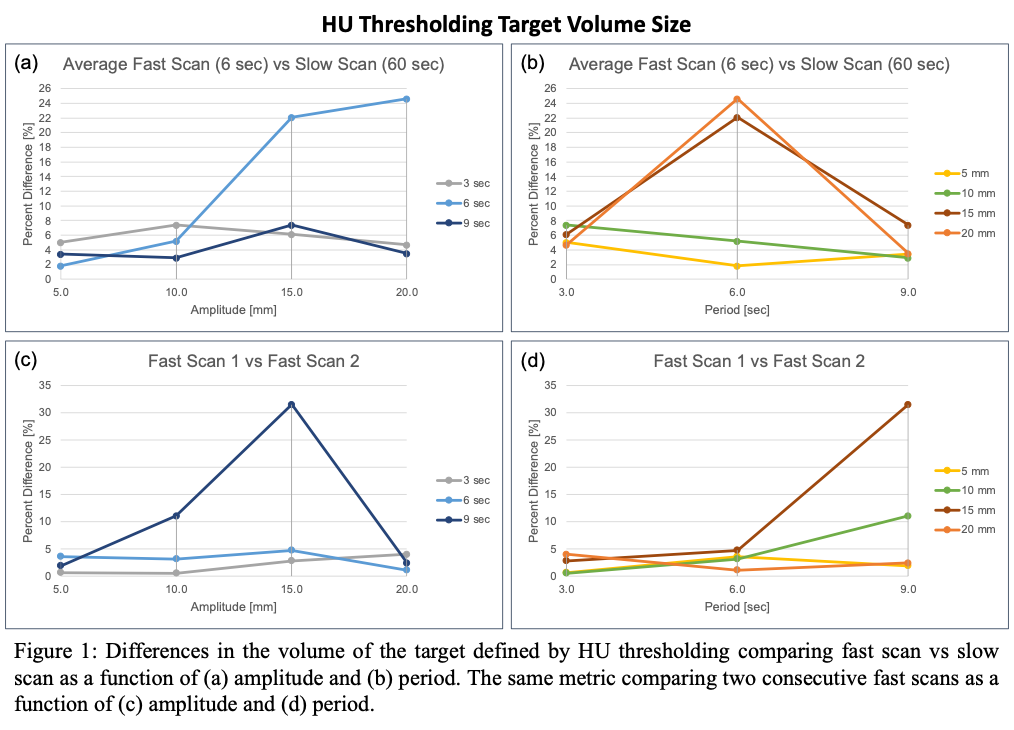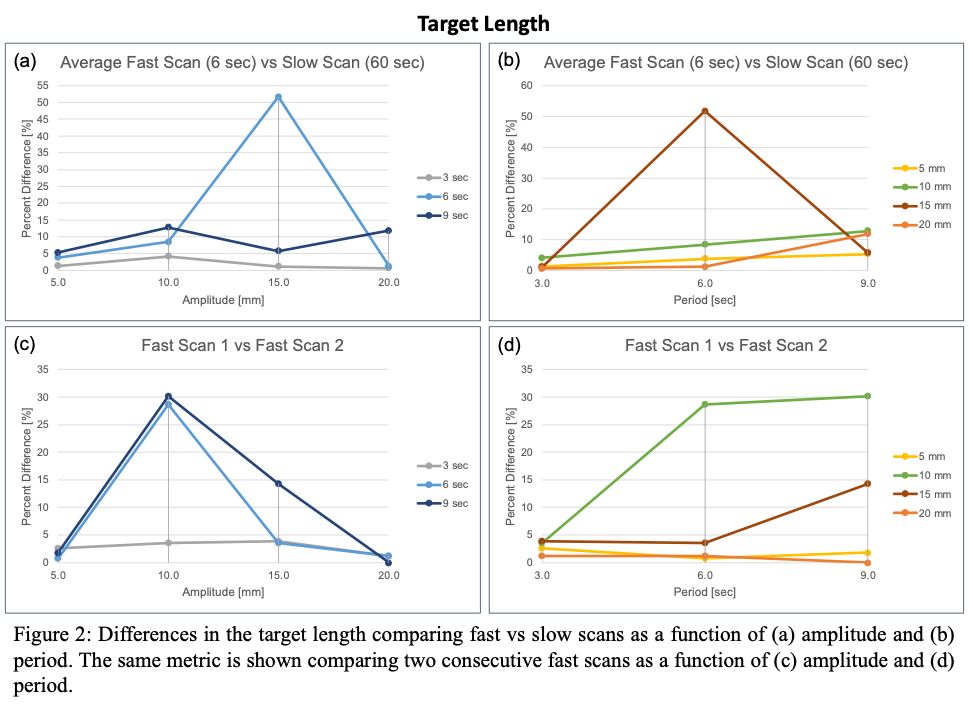Scanning Mode Parameters to Improve Image Fidelity on an Ultrafast Ring-Gantry Linac kVCBCT System
PO-1835
Abstract
Scanning Mode Parameters to Improve Image Fidelity on an Ultrafast Ring-Gantry Linac kVCBCT System
Authors: Allison Haertter1, Brandon Koger1, Michael Salerno1, Christopher Kennedy1, Boon-Keng Kevin Teo1, Michelle Alonso-Basanta1, Lei Dong1, Taoran Li1
1University of Pennsylvania, Department of Radiation Oncology, Philadelphia, USA
Show Affiliations
Hide Affiliations
Purpose or Objective
A recently developed CBCT acquisition mode from Varian, HyperSight™ kVCBCT system, was designed to facilitate breath-hold imaging and reduce free-breathing motion artifacts. This study aims to recommend best practices for free-breathing fast CBCTs by assessing target contouring and localization robustness under various respiratory amplitudes and speeds using a motion phantom.
Material and Methods
CBCT and CT images were taken of the QUASAR respiratory motion lung tumor insert phantom set to several breathing periods (0, 3, 6, 9s) and amplitudes (0, 5, 10, 15, 20mm). HyperSight CBCT thorax imaging protocols include an ultrafast 6s acquisition (“fast”) and a longer 60s acquisition (“slow”), equivalent to the TrueBeam™ full-fan gantry rotation. 4DCT average scans from a standard CT simulator were used as reference images. For each breathing period and amplitude combination, the random interplay effect between breathing motion and image acquisition were investigated by acquiring two fast scans (6s) consecutively. Motion capturing robustness was evaluated by comparing the fast to slow scans for each period and amplitude combination. Robustness was evaluated using target volume (defined by HU thresholding from -500 to 0 HU), and measurements of target dimensions.
Results
The HU-threshold target volume and length measurements for the fast (6s) and slow (60s) scans were similar for small amplitudes (≤10mm) and short periods (<6s). When varying breathing period, 9s periods produced the largest difference in target length and volume between the serial fast scans; while for varying amplitudes, 15mm amplitudes produced the largest difference in target volume and 10mm in length. For fast breathing (3s) and intermediate motion (5mm), up to 5% deviation in target volume/length were observed compared to 4DCT data. For slow breathing and/or large motion scenarios, slow scans showed better agreement with 4DCT for target volume, length, and width, with most differences <1% and the largest differences (6.5%) seen for the 20mm/9s combination (see Table 1).
| Volume |
| Length |
| Width |
|
| Breathing Amplitude & Period | Fast CBCT | Slow CBCT | Fast CBCT | Slow CBCT | Fast CBCT | Slow CBCT |
| 0 mm/0 sec | 0.6% | 0.6% | 4.9% | 4.9% | 1.6% | 1.3% |
| 5 mm/3 sec | 4.5% | 0.6% | 5.3% | 4.1% | 4.6% | 1.0% |
| 20 mm/9 sec | 9.7% | 6.5% | 13.0% | 2.4% | 5.0% | 4.9% |
Table 1 - Percent Deviation of Target Measurements from 4DCT: Comparison of HU threshold-defined target volume, length, and width between the average values calculated for the 2-serial fast CBCTs (6s) and slow CBCT (60s) compared to the 4DCT image acquisitions.


Conclusion
Fast (6s) CBCT scans produce stable, reproducible target visualization for short (<6s) periods and small (<10mm) amplitudes of motion. Longer periods and larger motion may result in inconsistent target visualization if coupled with fast CBCT scans. For slow breathers and motion >10mm, the tested 60s preset provided better agreement with 4DCT images as it captures several full cycles of respiration. Further parameter optimizations are being conducted for more comprehensive recommendations.